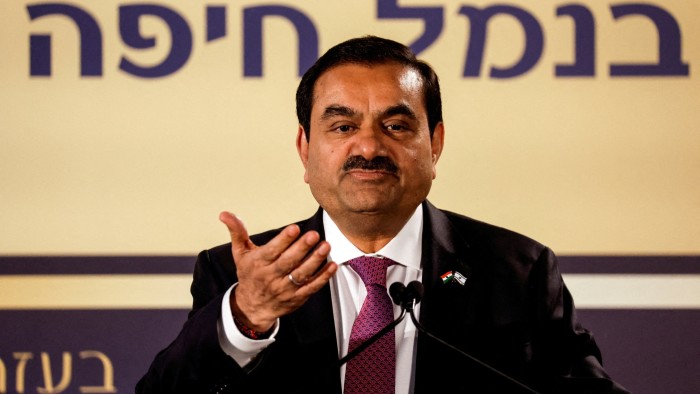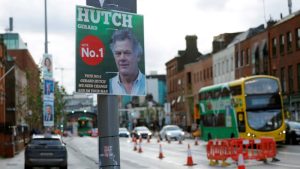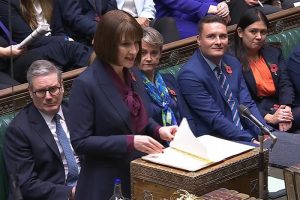Fate of Adani alleged bribery case could hang on Trump presidency

To the public, Gautam Adani is the Indian billionaire who has built a powerful conglomerate stretching across mining, ports and renewable energy. To his alleged co-conspirators in a multibillion-dollar bribery scheme, he went by code names including “Numero Uno ”.
Asia’s second-richest man was this week named in a criminal case filed by the US government that charged him with perpetrating a scheme to bribe Indian government officials in exchange for advantageous terms on solar power contracts that were set to yield more than $2bn in profits.
The US attorney’s office in Brooklyn charged Adani alongside seven defendants, including his nephew Sagar Adani — an executive at Adani Group subsidiary Adani Green Energy — and three former employees of large Canadian pension fund Caisse de dépôt et placement du Québec (CDPQ).
The defendants allegedly agreed to pay more than $250mn in bribes to Indian officials between 2020 and 2024, in a plan concealed from the US investors and banks from which they raised billions of dollars.
Prosecutors claimed Adani himself met an official in the Indian state of Andhra Pradesh to “advance” the plan.
The charges against Adani include securities fraud, while others were charged with conspiracy to violate the Foreign Corrupt Practices Act, which outlaws bribing foreign government officials.
It is one of the most high-profile cases pursued by the DoJ in recent years, crossing several jurisdictions and targeting a business magnate in ways that could have economic and diplomatic knock-on effects. It also raises the prospect of what could become fraught extradition proceedings.
Kevin Davis, professor at New York University School of Law, drew parallels with Brazilian construction conglomerate Odebrecht, which was involved in Brazil’s sprawling corruption investigation known as “Car Wash” and later agreed to pay the US and others multibillion-dollar penalties.
In that case, the DoJ did not pursue Odebrecht’s former CEO, “whose stature in Brazil was comparable to Adani”, Davis said. “What’s interesting here is that the Americans are going after the individual . . . but in terms of the economic and political ramifications, the proceeding is similar in scale”.
The case comes just months before US president-elect Donald Trump’s return to the White House in January will usher in a new US attorney-general.
Daniel Richman, a former federal prosecutor, said the timing of the charges may have been “an effort to get the nature of the charges out . . . before the change of administration”.
A new president “may cause those charges to be changed, withdrawn or otherwise impeded, but the allegations will still be out there and at the very least, the market and the public will have a sense of what the investigation has been about,” Richman said. If the government were to drop the case, parties potentially hit by the alleged scheme could “pursue their own remedies”, he added.
Adani earlier this month congratulated Trump on his electoral victory, pledging in a post on X to invest $10bn in US energy and infrastructure and to create up to 15,000 jobs. The billionaire is widely seen as having close ties with Indian Prime Minister Narendra Modi, who built a rapport with Trump during his first presidency.
The case follows accusations against the Adani Group of “brazen stock manipulation and accounting fraud” levelled by short seller Hindenburg Research last year — wrongdoing that Adani has repeatedly denied.
The Securities and Exchange Commission has brought a parallel civil case against Adani, his nephew and Cyril Cabanes, a former CDPQ employee who served as an executive at Azure Power Global, a renewables company whose largest shareholder is the Canadian pension fund.
A lawyer representing Cabanes in both cases declined to comment.
Federal prosecutors alleged that three former CDPQ employees, including Cabanes, and others participated in an “obstruction scheme” to hide or provide false information to the US government and destroy documents.
They also allegedly turned on their co-defendants by revealing to US investigators that Adani and others were involved in a bribery scheme, while failing to disclose their own roles in the matter.
The DoJ and SEC allegations against directors of Adani Green were “baseless and denied . . . [and] all possible legal recourse will be sought”, the Adani Group said.
CDPQ said it was “aware of charges filed in the US against certain former employees”, who were terminated in 2023. “CDPQ is co-operating with US authorities.”
The former Azure directors and officers referenced in the charges had been “separated” from it for more than a year, Azure said. “We have been co-operating with those agencies in relation to those and other matters and we will continue to do so,” it added.
The cases appear to be underpinned at least in part by PowerPoint presentations and Excel spreadsheets that allegedly laid out options to pay the bribes and conceal them as a “development fee” or “commercial proposal”.
Tracy Burnett, partner at Morrison Cohen, argued that the defence could seek to cast these documents in their favour.
“Potentially that is a way you could characterise the evidence, that it was so neatly recorded and memorialised that it was transparent,” she said. “Or the argument could be that they were transparent and that counts against the government’s argument that they were knowingly” breaking the law.
The filings revealed messages used to allegedly plot the scheme. Co-defendants referred to Adani under code names including the “Super Aggregator” or “the big man”, enforcers alleged.
For all the allegations in the complaints, prosecutors are still facing complex cases in which they will have to prove the requisite criminal intent.
There “is a heightened standard” under the Foreign Corrupt Practices Act, said Burnett. “The government needs to prove the defendants knew they were making corrupt payments, knew they were committing bad acts.”
#Fate #Adani #alleged #bribery #case #hang #Trump #presidency





